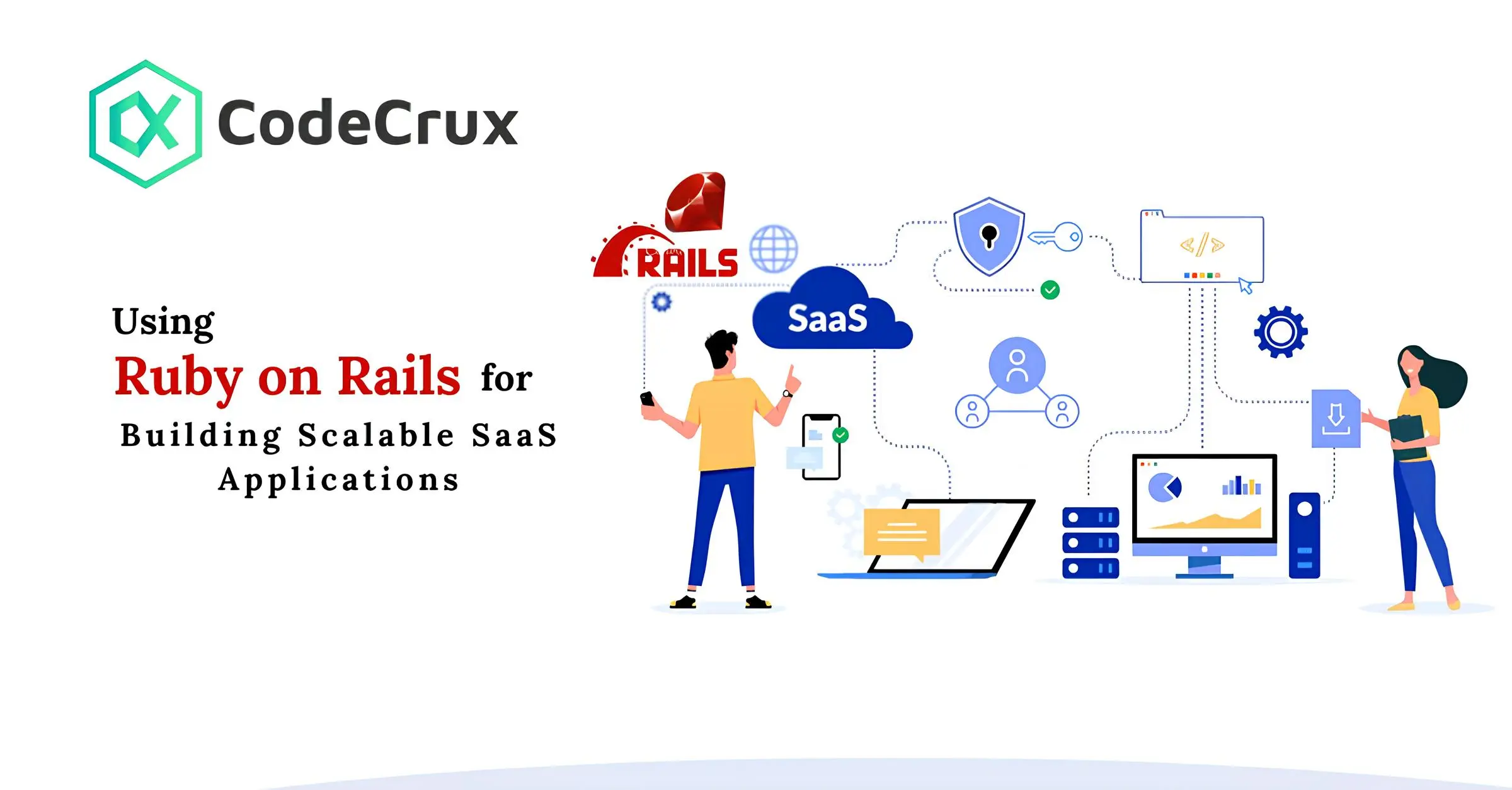Using Ruby on Rails for Building Scalable SaaS Applications

In the competitive world of Software-as-a-Service (SaaS) applications, scalability and efficiency are paramount. Choosing the right technology stack can make all the difference between a seamless user experience and a platform riddled with performance bottlenecks. Ruby on Rails (RoR) has emerged as a robust framework for building scalable SaaS applications, thanks to its simplicity, flexibility, and vibrant community. Let’s explore why Ruby on Rails is a top choice for SaaS development and how you can harness its potential.
Why Ruby on Rails for SaaS?
1. Rapid Development
Ruby on Rails emphasizes convention over configuration, enabling developers to build applications quickly without the need for extensive boilerplate code. Its “scaffolding” feature allows you to set up basic CRUD operations in minutes, letting you focus on the core functionality of your SaaS application.
2. Rich Ecosystem of Gems
Gems are reusable libraries in the Ruby ecosystem that can significantly reduce development time. Whether you need authentication, payment integration, or API building, chances are there’s a gem for it. Popular gems like Devise (authentication) and Stripe (payment processing) streamline the development process.
3. Scalability
While RoR has a reputation for simplicity, it is also highly scalable when paired with the right architecture. Techniques like horizontal scaling, caching, and database optimization ensure your SaaS application can handle increasing traffic and data loads without compromising performance.
4. Built-in Testing Framework
RoR includes RSpec and Minitest, powerful tools for automated testing. These frameworks promote a test-driven development (TDD) approach, ensuring high code quality and reducing bugs in production.
5. Active Community Support
The Ruby on Rails community is vast and active, offering extensive documentation, forums, and open-source contributions. Developers can tap into this resource for guidance, troubleshooting, and inspiration.
Key Features of SaaS Applications Built with Ruby on Rails
1. Multi-Tenancy
Multi-tenancy is a critical feature for SaaS applications, allowing multiple customers to share the same application while keeping their data isolated. RoR supports various multi-tenancy strategies, such as shared databases with row-level data isolation or separate databases per tenant.
2. RESTful APIs
SaaS applications often need to integrate with other services or offer API access to users. RoR’s strong support for RESTful architecture makes it straightforward to build and maintain APIs.
3. Payment Gateways
Ruby on Rails integrates seamlessly with popular payment gateways like Stripe, PayPal, and Braintree. Gems like Stripe Ruby and ActiveMerchant simplify payment processing, subscription management, and invoicing.
4. Analytics and Reporting
Data analytics and reporting are essential for SaaS success. RoR’s Active Record and gems like Chartkick and Groupdate allow developers to create detailed dashboards and reports effortlessly.
Best Practices for Scaling SaaS Applications with Ruby on Rails
1. Optimize Database Performance
Use database indexing, query optimization, and connection pooling to improve performance. Gems like PgHero can help monitor and optimize PostgreSQL databases.
2. Implement Caching
Caching can drastically reduce response times. Tools like Redis and Memcached, coupled with Rails’ built-in caching mechanisms, can store frequently accessed data.
3. Leverage Background Jobs
Offload time-consuming tasks to background jobs using gems like Sidekiq or Delayed Job. This ensures a smoother experience for end-users by preventing bottlenecks.
4. Adopt Containerization
Using Docker for containerization ensures consistent environments across development, testing, and production. Kubernetes can help manage scaling and deployment efficiently.
5. Monitor and Log
Use monitoring tools like New Relic, Datadog, or Skylight to track performance and identify bottlenecks. Rails’ built-in logging can also provide insights into application behavior.
Success Stories
Several successful SaaS applications have been built using Ruby on Rails, including:
-
Basecamp: A project management tool that was instrumental in the creation of Ruby on Rails.
-
Shopify: A leading e-commerce platform serving millions of businesses globally.
-
GitHub: The world’s largest code repository platform, initially built on Ruby on Rails.
Conclusion
Ruby on Rails provides an excellent foundation for developing scalable, feature-rich SaaS applications. Its developer-friendly nature, combined with a strong ecosystem and active community, makes it a preferred choice for startups and enterprises alike. By adhering to best practices and leveraging modern tools, you can build a SaaS platform that scales seamlessly with your business needs.
Start your SaaS journey with Ruby on Rails, and unlock the potential for innovation and growth!